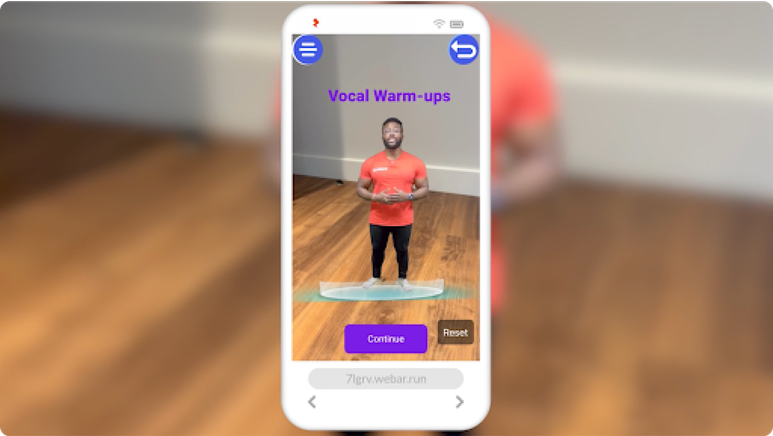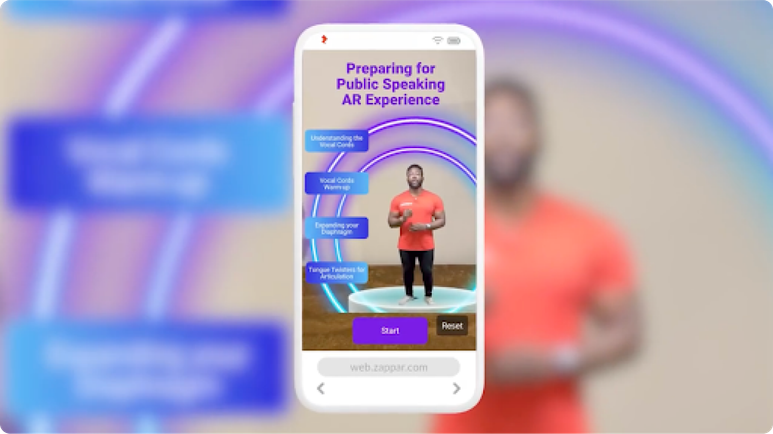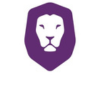Over the last five years, Learning and Development has seen dramatic changes including a renewed focus on interactivity and experience. Enter Augmented Reality (AR) – the digital overlay of content onto your existing environment.
Many of us use AR regularly without knowing – in fact, you carry AR around with you every single day. Popular apps like Instagram, Snapchat, Target, Warby Parker, and Wayfair all use AR. To access it, you use your mobile device to overlay digital content like face filters, eyeglasses, or furniture and view and capture that content in your existing environment. Several retailers have also experimented with AR glasses – Snapchat spectacles and Ray-Ban Meta smart glasses.
AR is one of the fastest growing, most dynamic, and easy to master new tools in any L&D professional’s toolbox. With AR, you can create an immersive experience that your learners will react to and remember - turning your learning program into a learning experience. This is a great opportunity to utilize the BYOD policy at your workplace and with 80% of AR development being for mobile devices – adoption is built in.
The best part is that your existing L&D skillset transfers to this new tool. You can use your video editing, eLearning authoring, storyboarding, needs analysis, and project management skills to build amazing AR learning experiences.
Successful AR integration begins in design. As you are conducting a needs analysis and architecting your solution, be AR-minded. Normalizing AR in learning starts with us – the learning professionals – looking for a space where the content we are creating can be amplified with immersive technology like AR.
What will be your first AR project? Keep reading to learn more about how to get started.
The modern workforce is busy, under-resourced and distributed globally. To meet the extensive needs of the modern workforce, your training content needs to be more engaging, interactive and impactful than ever, and inclusive of remote workers- giving them the same learning opportunities as those in the office. By incorporating augmented reality into your learning solutions, you can create materials that are not only good for your learners but also streamline your programs.
We commissioned ‘Layered’, a neuroscience study with Mindshare, a media agency, and Neuro-Insight, leaders in their field of neurological testing. We found that when compared with traditional video and online experiences, AR triggered a drastic spike in retention, emotional, and memory encoding in users’ brains. The team studied a nationally representative sample of 150 consumers in a first-of-its-kind research project that compared the brain’s subconscious reactions to stimuli between AR and other applications. AR activities almost doubled (1.9x) visual attention, with a 70% increase in memory encoding. In an L&D setting, this means solutions utilizing AR can potentially be 70% more effective in allowing participants to retain information, and then utilize these skills in their job. It also suggests less retraining will be required at a later date.
Attention is a necessary precursor to any sort of brain response to communication if people don’t register a message it will not have a lasting impact. Creating a learning solution that sparks this attention in your workforce is a resource worth getting right. One of the incredible findings from ‘Layered’ was AR’s ability to drive high levels of visual attention and engagement compared to non-AR tasks. In fact, upon completion of our research, we found that AR delivered almost double (1.9 times) the levels of visual attention compared to the non-AR equivalent.
In neurological terms, if any type of communication is to be effective, it needs to be encoded into long-term memory - otherwise, it will have little to no impact on any of our future actions. For any L&D materials to be successful they should be easily retained and have a lasting impact.
What we found in ‘Layered’ was that memory encoding was 70% higher in the AR tasks compared to the non-AR tasks. What this means is that AR is a powerful way to deliver information that is subsequently retained.
The benefits of using AR are clear. It can enhance the learning experience, letting people choose their own approach to learning with the resources provided, as well as facilitating remote learning. Training can take less time and be more flexible; instead of a scheduled appointment, a training experience can be rolled out at any time to upskill employees to a necessary level. If designed well, it can provide an engaging experience that pulls people in, leading to a greater impact for the business and individual.
Paper-based learning
A switch to AR doesn't call for throwing out your entire program, quite the opposite. AR can be integrated with paper-based learning materials, such as posters or textbooks to provide additional interactive content, enhancing the learning experience.
Why not try...
Taking your health and safety posters to the next level, helping your employees visualize the escape routes and even test them on their understanding.
E-learning courses
Likewise, AR can be easily integrated into your existing eLearning and microlearning courses via a simple link or QR code. Using AR means your learners are no longer confined to monotonous 2D videos or slide presentations. Instead, learners can interact with 3D content for deeper engagement, overlay information on real-world scenarios for greater context, or undertake practical simulations in real time.
Why not try...
Creating personalized AR dashboards for your employees with a range of modules they can choose based on their interests and existing skills and complete in their own time.
Contextual learning with real-world application
AR is ideal for providing real-time information based on the environment. Whether it's providing information for new starters as part of the onboarding process or vital health and safety procedures. Having the information accessible at the point of need is invaluable. Part of the benefit of this contextual learning is the ability to facilitate real-world application. AR allows learners to apply their knowledge in real-world contexts immediately.
Why not try...
Provide just-in-time learning for your office IT equipment, allowing your employees to access information or guidance through 3D models or video right at the moment of need.
Flexible and collaborative learning
AR enables your workforce to access and engage with different materials from different locations, by allowing people to access the content when it suits them, and therefore when they are most engaged. The flexibility of AR platforms like Zapworks also means you can update messaging and experiences to fit with changing guidelines, policies and procedures. The flexibility AR provides is great at facilitating collaborative learning experiences from various locations, where multiple users can interact with the same augmented content simultaneously, promoting discussion and collaborative problem-solving.
Why not try...
Creating a virtual collaborative learning space where your employees can work together on projects or learn new skills.
Increasing engagement
Effective interactivity is something that traditional remote learning materials can lack. A book or leaflet can provide information – but it can’t answer questions or elaborate on specific points. The same goes for a video; while it’s a great way to deliver visual information, it lacks interactivity and immersion.
Instructor-led training will always be impactful, as long as participants have the room to engage and be inquisitive. We do not suggest that this will ever change, what we do suggest is that AR can help elevate the remote learning experience and make it more engaging. The use of alpha video for example can stream a full instructor-led lesson, accessible whenever and wherever the user needs.
Why not try...
Breaking down your existing instructor led training into bitesize alpha videos that can be accessed after the session as refresher material.
We are just scratching the surface with Augmented Reality (AR). There is a lot of untapped potential, especially for the learning and development world. What I love about AR is that you can put the experience in the context of what the learner is viewing. You can anchor these experiences on images, horizontal and vertical planes, and even recognize real-world objects and build an experience around that object.
AR can play a considerable role in micro-learning. Imagine a technician who goes onsite to troubleshoot some piece of equipment. They will not have much time to go through a 30-minute eLearning course, but they could easily pull out a phone, scan the machine, and then get a diagnosis of the issue, a 3D model of the unit, and be guided step by step on how to fix it.
Imagine an associate walking into their first day on an assembly line, pulling out a device, and having the device walk them through the setup and guide them through the facility, helping them know how to navigate and where each important area is located. This AR experience helps them in the moment of need and guides their field of view.
I have seen examples of someone on an assembly line being guided through disassembling equipment they had never previously seen, all via AR. They would see a digital representation of the equipment and a short explanation of what to do first. The learner would then perform the tasks, speak "next step," and it would show them the next step. After being guided through the disassembly a few times, they could perform the task on their own.
AR places the learning in the context of where the learner is located and what they are viewing. It allows them to get help and guidance at the moment, which is more relevant than trying to recreate the experience digitally and can significantly change how we learn.
Consider your organisation’s microlearning experiences. What content could you enhance with AR? What experience could you make more dynamic with the addition of AR? How can you create those “a-ha” moments that are immersive and memorable?
AR is at the center of how learning leaders and professionals at every level bring learning into the flow of work. AR gives existing learning content greater meaning, value, visibility, and most importantly- context!
AR in the flow of work drives knowledge application at scale. When learning is designed to take place in the flow of work, the relationship between learner and content changes for the better. While core content may be designed and packaged for the LMS, AR content is contextualized as a living resource placed in direct relation to a moment of need, a compelling pain point, or where accuracy is vital to the safety and security of daily operations.
In fact, AR presents the strongest opportunity in more than a decade for learning and development professionals to not only drive performance improvement, but also transform the perception of the entire learning function from cost center to revenue driver.
When we think about extending the life of learning, there are three elements to L.E.T. that happen - to ensure AR content is linked to real value for learners, and the business.
By leveraging your existing content to create AR enhanced learning experiences, you ensure nothing about the AR strategy will undermine current learning initiatives, inviting collaboration across teams. Leveraging content cultivates a rich learning experience that builds rapport and trust with peers and partners. The last thing an AR learning experience should do is present a solution that implies the previous work of others is incorrect or outdated.
Whether content is presented in person, virtually, or in a hybrid manner, AR sustainment experiences will extend the life of content and deliver immediate value to learners by ensuring key concepts can be accessed and studied, practiced, and applied at any time after the initial learning experience. Data gathered from subsequent use of materials shared through AR will also inform leaders, stakeholders, and design teams on areas of improvement, success, and innovation.
NOTE: Traditional learning modalities aren’t ignored because of AR, they are enhance and extended, which optimizes the ROI of learning assets like costly videos, custom graphics, or active licenses for professional talent in media.
The power of AR to co-locate vital content in the flow of work isn’t a small detail – it is the heart of the value of this technology. For decades, learning professionals have promised they would train, develop, and equip learners to succeed. While brilliant people are keeping this promise every day, all too often amazing content isn’t available to help a learner when they need it the most – in the flow of work. Whether in a frontline position, an industrial workspace, or tasked with highly regulated activities in science or engineering, AR makes it possible to surface the right information, in seconds. This transformative reality not only delivers robust data about learner engagement, but AR also drives clear analytics that show a direct link between performance in roll and competence on the job. This accurate and rapidly available supporting information is made visible in the flow of work.
“AR isn’t a trend, it’s a tidal wave and every leader in learning and performance should be planning their entry into this arena now. ”
Organizational leaders who make a clear commitment to AR learning strategies, with a steady and scalable approach, will create workplaces where employees find real support for their on-the-job performance and their long-term career. At the end of the day, AR will help learning professionals keep their most important promise: to help people succeed on the job.
AR offers a diverse range of opportunities to enhance your learning experiences, from soft skills training to onboarding. In this chapter, we’ve outlined some of the most successful ways learning professionals are using Augmented Reality in their learning solutions.
Onboarding is one of the best ways to test and learn augmented reality within your learning solutions to provide greater personalisation when introducing new employees to your company.
The ‘CEO Experience’: Create an alpha channel video or 3D avatar of your CEO or founders to give new joiners a more personalized introduction to key stakeholders.
Virtual Tours: Offer employees a guided tour of your office space, factory or shop with AR providing information about different areas and facilities, using 360 video and hotspots.
Orientation Training: Give your new hires access to interactive modules that help them get familiar with company policies, values, and culture. Bringing your HR or leadership to life with Alpha video is a great addition to these types of experiences.
Imagine this: It’s Day One at your new job. The organization is huge, and part of your onboarding experience is to become familiar with the large campus. What are some of the ways that you could build a functional understanding of key locations and navigation?
Option 1:
You are given a tour. Maybe it is a group tour or a one-on-one tour. In this reality, a people resource is responsible for guiding you through the locations, sharing information (hopefully consistently from group to group), and then sending you on your way.
Option 2:
You are handed a map with starred locations and you scavenger hunt your way through the self-guided tour. Of course, one time when I was left alone to find my way at my current job, I ended up in a basement with all the delivery robots. So, let’s explore a third option.
Option 3:
You are handed a map with starred locations and you scavenger hunt your way through the self-guided tour. Of course, one time when I was left alone to find my way at my current job, I ended up in a basement with all the delivery robots. So, let’s explore a third option.
Imagine you are provided with a half-sheet with instructions and a QR code to scan. You scan the code with your phone, and a colourful map of the organization appears on-screen in front of you. It highlights the locations to visit and gives you some basic directions to get started. You start traveling to each of the locations. At first glance, you just see the people walking by and a plant that desperately needs to be watered next to an odd-shaped sculpture.
Then, you spot a sign that matches your onboarding tour instructions with a QR code. You scan the code, point it at the sculpture, and a new world unfolds revealing ways to interact with the sculpture. You can watch the story of the artist who made the sculpture and see how parts of the sculpture relate to the mission of the organization. A plant, that you now see is fake, is part of the exhibit as a reminder of the importance of caring for each other as well as the mission. At each location on the map, you have a similar experience. You scan a QR code and are introduced to important information about the company, the location, the people and the driving forces behind the organization’s vision.
This AR tour doesn’t just give you information, but creates an experience that will impact your entire career at this organization. Years later, when you move onto another opportunity, you know you’ll always remember the people, the plant and sculpture from your first day.
This is just one possibility for how AR can be gamified for learning. AR-enhanced learning experiences help users to see the unseen, like instructions on a piece of equipment or supporting information on a posted dashboard. Gamify your AR learning by wrapping these experiences in-game mechanics, like objectives, challenges, practices, and rewards. This is the intersection of AR and gamified learning.
Simulated Skill Training: Your employees can practice and hone their skills in a safe, simulated environment, using 3D models, video and interactive hotspots. This is especially beneficial for roles that require handling complex equipment or machinery.
Soft Skill Training: AR can simulate various scenarios to help employees develop soft skills, like communication and leadership, by interacting with virtual characters.
Product Demonstrations: Your sales teams can use AR to demonstrate product features and benefits in a more interactive way, enhancing the engagement and retention levels of the training.
Interactive Product Materials: Your employees can access interactive product materials such as leaflets, manuals or presentations that provide in-depth information and visual demonstrations, aiding in better understanding and retention.
Safety Simulations: Make sure your employees are trained in safety protocols, AR can simulate potential hazards and help them learn how to avoid or mitigate them in a realistic but controlled environment.
Emergency Response Drills: AR can help in conducting realistic emergency response drills, allowing your employees to practice their roles in crisis situations without real-world risks.
Collaborative Learning Spaces: AR can create virtual collaborative learning spaces where your employees can work together on projects or learn new skills, fostering teamwork and collaboration. This is especially beneficial in the new world of hybrid working.
Team Building Activities: AR can be used to design interactive team-building activities, encouraging cooperation and fostering a healthy team dynamic. AR scavenger hunts can be perfect for this.
Just-in-Time Learning: AR can provide just-in-time learning, where your employees can access information or guidance right at the moment of need, enhancing their performance and productivity.
Interactive Performance Dashboards: AR can create interactive performance dashboards, helping you and your employees to track and analyze their performance in real-time, facilitating continuous improvement.
Are you ready to get started with AR in your Learning Experiences? Here are the steps you will need to take to start your Augmented Reality journey:
First, spend time exploring the different types of immersive technology including augmented reality (AR), mixed reality (MR), virtual reality (CGI VR), and immersive video (360 video). Understanding the fundamental differences between these immersive technologies will help you to get clear on what you want to do with AR.
“Do not use AR for the sake of using AR just because you think it's cool, innovative and it's going to change something. You need to start with your business problem and what you're trying to achieve.”
Pauline Rebourgeon, Head of Learning Technology and Innovation, Global L&D, Ericsson
Even if you plan on only working in AR, knowing what each of these options is capable of can help you identify specific and effective use cases that provide the best results in your learning experiences.
Next, pick one thing - just one area in your learning experiences that you want to enhance with AR. If you go too big or broad to begin with, you will stall out with too many ideas. Start with one great place to add AR.
Once you have your AR vision set the next step is to play. The more comfortable you get using the technology the better you will be able to align the business problems you want to solve with it. Get your whole team in on the action! Getting them involved gets everyone comfortable with the technology without the pressure of a score or mandated completion. Plus, it amplifies creativity and idea generation. The more you and your team play with AR – the more creative and engaging AR ideas you will discover. Make sure you schedule regular check-ins and capture all of the ideas, no matter how fantastic they might seem at the moment. This work becomes the start of your specific organization’s list of use cases.
“Don’t be afraid of experimentation in AR. It is a completely new medium. And, like any good experiment, you really want to try different things out, see what works in that particular medium and works with your particular audience. ”
Alexandra Zaccaria Vice President of Creative and Brand, Transfr
Time to start prototyping! Zappar has a wide range of amazing tools to fit you and your team’s skillset. As learning and development professionals, your skills directly translate over to building AR projects. With no-code, rapid development tools like Zapworks Designer, you can take those ideas and your existing skills and bring them to life. If you can build a PowerPoint slide, you can build an AR experience. Work with your team to identify a handful of potential options and then build them out. If you want to get stakeholder buy-in, you have to get them to experience AR.
Let your prototypes become the foundation of your conversations going forward with project teams and leadership as you start to normalize AR in your learning development.
“One of the things I've found to be most important is to find your advocates within your organization. That could be at any level senior level advocates, internal team members.”
Alexandra Zaccaria Vice President of Creative and Brand, Transfr
Talk about AR with your colleagues, friends, mentors, and leaders. Be sure to follow the amazing L&D folks who are creating and using AR today – like the ones who contributed to this eBook!
When it comes to measuring the success of your AR-enhanced learning solutions, it really comes down to one thing: defining clear objectives from the very start.
When embarking on a new learning experience, it is crucial to define clear objectives and establish the right Key Performance Indicators (KPIs) to measure the success of your program. By aligning the KPIs with the learning goals and leveraging the capabilities of Augmented Reality (AR), you can ensure that your success metrics accurately reflect the effectiveness and impact of the learning experience.
Here are some more of the metrics you can track in AR using tools like Zapworks Designer when combined with popular web analytics tools like Google Analytics or Microsoft Clarity.
Scans
How many times was your AR experience scanned? This is measured once the QR code has been scanned by your camera app, or when the deep link has been tapped.
Unique users
How many individual learners accessed your experiences.
Average Dwell time
On average, how long are users spending in your AR experience?
Total dwell time
The sum of the total dwell time spent by your learners in your AR experience.
Completion rates
What % of learners got to the end of or to a certain stage of your learning experience?
Geography
Which countries, territories or cities are your learners engaging with your AR experience the most?
Time of day
When are your learners engaging with your learning experience?
Custom events
Track specific button taps, or which scenes or pathways your learners are engaging with the most.
Which of these metrics you use will be heavily dependent on the objectives you set out at the start of your project. Whatever AR metrics you use to track the success of your AR experience, we typically advise you to also combine the quantitative data with qualitative feedback as well.
Where appropriate, make sure you’re also gathering qualitative feedback on your immersive learning solutions. Use surveys and feedback forms to compare your AR-enhanced learning solutions with previous non-AR versions to ensure your learners know how to engage with your AR experience and give vital feedback on the user experience.
For example:
- Collect feedback on your immersive learning experience to gauge learner satisfaction
- Monitor the ease of use and any technical issues encountered
- Evaluate the ability of learners to access training at their convenience and in various environments.
Usability and accessibility are essential aspects for the success of any learning experience. Conduct a survey with learners to gather feedback on their experience using the AR application. This will help determine its ease of use and identify any issues encountered. Additionally, track any technical issues related to device compatibility, such as problems specific to certain device types or operating systems. Considering these elements will ensure that the AR learning experience is accessible to more learners and provide a smoother user experience.
As you’ve seen throughout this guide AR is all about driving deeper engagement with your learners. AR can literally place people, objectives and training scenarios in the room with them (even when delivered remotely). When thinking about using AR in learning solutions, think about AR as a way to enhance and increase engagement with your learners, whether with your existing solutions or delivering completely new immersive learning experiences with AR.
💡 If you are creating your learning content using Zapworks Designer, you have the convenient option to export SCORM packages. These packages can then be effortlessly uploaded to your current Learning Management System (LMS). By doing so, you are able to merge and analyze learner completion data alongside your existing learner solutions. This integration provides you with the opportunity to gain a comprehensive understanding of your learners' progress and performance, allowing for effective evaluation and improvement of your learning experiences.
*currently available in beta
When rolling out an AR-enhanced learning solution, L&D professionals should focus on specific business outcomes to ensure that their efforts align with wider organisational goals and offer a meaningful return on investment.
Here are 5 key business outcomes to think about when measuring the success of your immersive learning solution:
Compare your AR learners with more traditional learning or paper-based learning to assess whether AR has improved their time to competency when learning new information. Additionally, consider evaluating the effectiveness of AR in enhancing learner engagement and motivation compared to traditional learning methods. Furthermore, explore the potential benefits of AR in promoting active learning and providing a more immersive learning experience.
Measure:
- Any noticeable improvements in task performance, speed, or quality.
- The reduction in errors or mistakes after your AR training.
- How quickly learners can apply new knowledge or skills in their roles after undergoing AR-enhanced training compared to traditional training methods.
Test learners' knowledge retention by assessing their understanding immediately after the AR experience and again after a few weeks or months. As we’ve seen from our research with NeuroInsight, memory encoding is 70% higher with AR than more traditional forms of learning. Tracking information retention will help you gauge the long-term impact of the learning program. If your learning experience focuses on teaching specific skills, measure the learners' capability to apply those skills in real-world settings.
Measure:
- Knowledge retention over time to determine the effectiveness of the AR solution in helping learners retain information.
Because Augmented Reality (AR) can significantly prolong the lifespan of your printed materials and effectively connect the physical and digital, it is crucial to assess whether the implementation of AR-enhanced learning solutions has resulted in a favorable impact on learning costs. Moreover, it is equally important to consider the potential long-term financial benefits of integrating AR technology into your learning solutions, such as reduced printing and distribution costs, enhanced accessibility, and travel costs.
Measure:
- Reductions in training-related travel or venue hire.
- Savings from decreased training time or resources required (e.g., fewer trainers or less printed material).
- The financial benefits derived from the AR solution against its costs. This should encompass both direct costs (e.g., development, hardware) and indirect benefits (e.g., improved productivity, reduced errors).
For larger organizations and industries where safety is of utmost importance, it is crucial to measure the decrease in the number of accidents or safety incidents that occur after employees receive training. This evaluation allows organizations to assess the effectiveness of the training program in improving safety outcomes and ensuring the well-being of their employees.
Measure:
- The reduction of workplace injuries
- Reduction in minor errors
- Safety and well-being of employees
Lastly, as an organization, it is crucial to evaluate if the adoption of cutting-edge technologies such as Augmented Reality (AR) can positively impact and enhance your employer brand. AR can deliver more personalised comms at scale that enable prospective employees to engage with company founders and learn about the company culture in a more immersive and personal way.
Measure:
- If your organization's reputation or brand image has benefitted from the adoption of AR through qualitative surveys and/or polls through 3rd parties.
- Brand sentiment over time
- Candidate quality and volume
Continuous improvement is essential for enhancing the effectiveness of your learning experience. Collect feedback from learners as you release new versions of your immersive learning experiences to understand if the improvements are resonating with them. As you build out your immersive learning solutions you’ll want to continually drive adoption and look to scale your projects to different teams and geographies.
It’s up to you what framework you use (there are plenty out there) but here’s a framework (STARS) to consider to continually improve and scale your immersive learning experience:
Ship
Deploy an MVP of your learning solution with a small cohort of learners first, done is better than perfect, ship something to your learners so you can start to gather data
Test
Test and learn from different approaches by getting quantitive and qualitative feedback using the methods discussed above. Make sure you have your KPIs in place and the reporting behind them to effectively share and socialise results with your team and wider business.
Analyse
Analyse and implement this feedback to improve your learning experience. Make sure you’re measuring the adoption rates of your AR solution compared to traditional learning methods. Determine how many learners are using the AR solution and assess any challenges or issues encountered during the adoption process.
Repeat
Once you’ve analysed and implemented your feedback and insights, start the process again, implementing what you’ve learned from the first three stages.
Scale
Once you’ve optimised and improved the UX of your learning solutions scale the successes to a wider group of learners to gather more feedback and insight.
As you move out of your ‘test and learn’ phase it’s really important to consider the scalability of your AR solution as you expand your cohorts of learners. Identify any scalability challenges, like resourcing, hardware or connectivity, and ensure that your immersive learning experience can accommodate a larger set of learners effectively. Evaluate how effectively the AR solution can be scaled to larger groups or different geographies while maintaining consistent quality.
The great thing about web-based augmented reality (WebAR) and tools like Zapworks Designer is that they’re designed to be easy to use, highly scalable and operate on lower-end devices. Ensure your AR software provider is up to scratch before choosing a solution.
For many learning experiences, the ultimate goal is to drive behavioural change. Observe if learners are applying what they have learned through AR in their tasks or jobs. Assess if there is a noticeable change in behaviour, especially in soft skills or safety training solutions. These KPIs will help you determine the practical impact of the learning experience on learners' behaviours.
AR and immersive technologies also give you the opportunity to keep pace with trends and drive a culture of innovation within your organisation. Modern learners, especially Gen-Z, have grown up with technology and expect sophisticated, interactive, and engaging learning experiences. AR and immersive technologies can cater to these evolving expectations.
To truly gauge the impact of AR-enhanced learning solutions, it's essential to have a combination of quantitative metrics (like test scores or time measurements) and qualitative insights (like feedback or interviews). Regularly revisiting and refining these outcomes will also ensure that your immersive learning experiences remain relevant and continue to deliver value.
Remember, start small and think big, choose your objectives and key results, then make sure your wider team or business is bought into those KPIs so everyone’s aligned and you can scale your immersive learning solutions efficiently and effectively.











